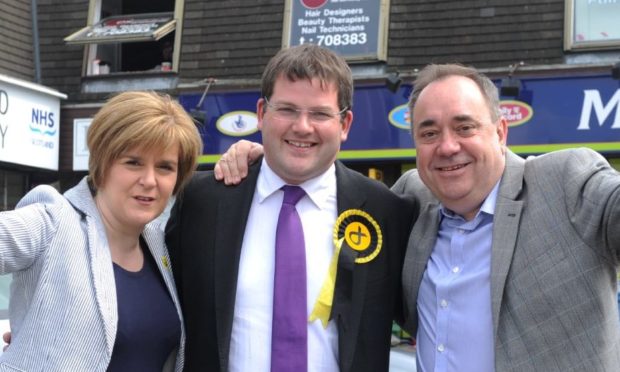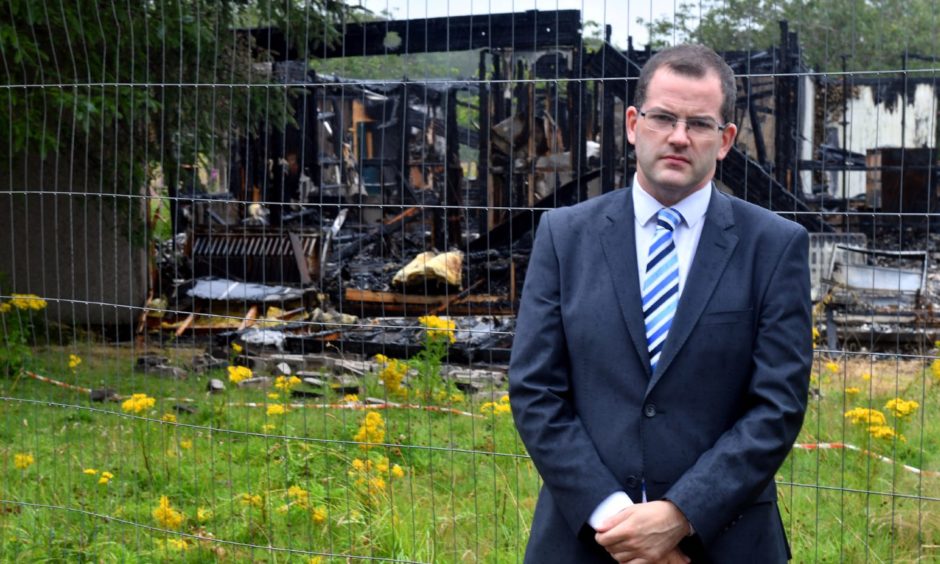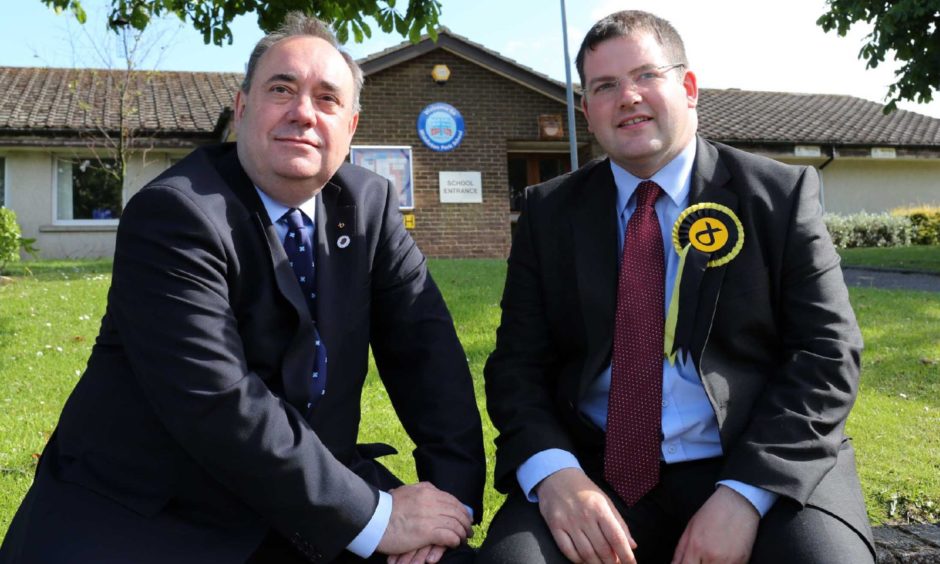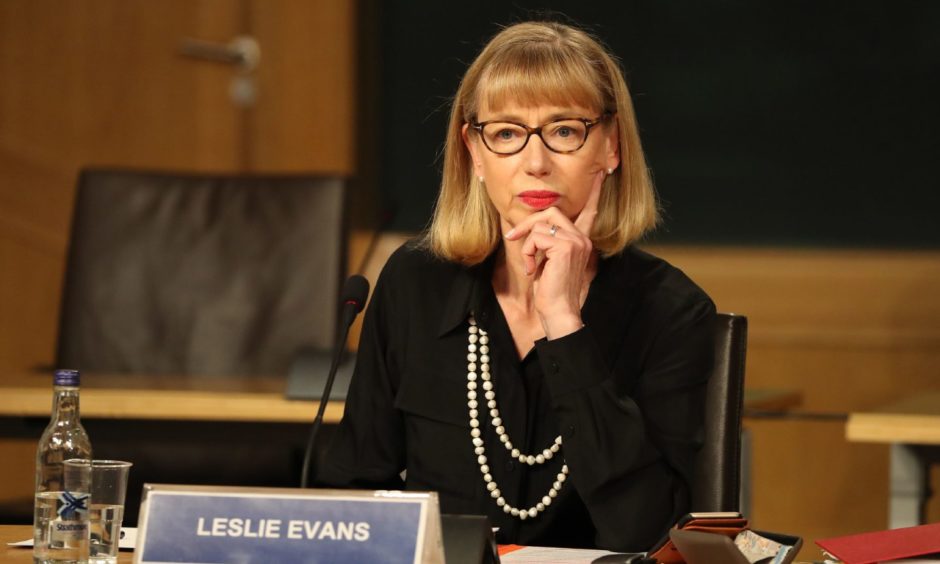Ex-minister Mark McDonald was “thrown under a bus” to justify the creation of a Scottish Government policy that would snare Alex Salmond, it has been claimed.
Members of the Aberdeen Donside MSP’s inner circle now believe his departure from government in November 2017 was linked to the handling of allegations against Mr Salmond.
And they are convinced the timing of Mr McDonald’s resignation was designed to prevent or overshadow a story that was expected to run on Sky News about the former first minister’s conduct.
Sources close to the former early years minister have spoken out following the publication of evidence to the Salmond inquiry, and they think his case should be considered by the Holyrood committee as part of its probe.
Sky News story
Emails released to the inquiry show that a senior official described Mr McDonald’s exit as part of the “justification” used for creating a new harassment policy to cover ministers and former ministers.
Evidence to the Holyrood committee has also revealed that Liz Lloyd, the first minister’s chief of staff, said she was first told that Sky News might run a story about Mr Salmond’s conduct at Edinburgh Airport on November 4, the same evening that Mr McDonald resigned from government.
Mr McDonald has previously said that it was Ms Lloyd who first made it clear he would have to quit over a controversial social media message in which he told a woman that his autocorrect had almost changed a word to a sex act.
The timeline of events here would suggest Mark was thrown under a bus to provide justification for a policy that was needed to investigate Alex Salmond.”
A source close to Mr McDonald said: “A number of people have said, both at the time and now, that the way Mark was treated was out of all proportion.
“The timeline of events here would suggest Mark was thrown under a bus to provide justification for a policy that was needed to investigate Alex Salmond.
“It is tragic that someone’s life and career were destroyed as part of a chain of events, when an apology at the time ought to have sufficed, given what the whole case was about.
“The committee has been tasked with looking at how the Scottish Government process in relation to Alex Salmond went so badly wrong.
“It might benefit them to look at how they engineered the justification for that process in the first place.”
Twitter messages
Mr McDonald, a former Aberdeen councillor, worked as a parliamentary liaison officer to Mr Salmond, and also to John Swinney, before being appointed as childcare and early years minister in May 2016.
He was suspended from Holyrood for a month in 2018 after a standards watchdog ruled that he sent Twitter messages to a woman in September 2016 that breached the code of conduct by creating an “intimidating, degrading, humiliating or offensive environment” for the woman, and that they “involved sexual harassment”.
The MSP, who has said he will not seek re-election next year, apologised for his behaviour but has also since accused former colleagues of trying to “grind me into the ground” in the aftermath, leaving him suicidal.
Mr McDonald declined to comment on the Salmond inquiry timeline.
It is incorrect to assert any link between the development of the procedure and actions considered under parliamentary procedure.”
A Scottish Government spokesman
‘Public concerns about his behaviour’
On claims the Aberdeen Donside MSP was “thrown under a bus”, a Scottish Government spokesman said: “Mr McDonald submitted his resignation on November 4 2017 as a result of public concerns about his behaviour.”
Asked about evidence suggesting Mr McDonald’s case was used as justification for the new harassment policy, a government spokesman said: “As the permanent secretary has set out, the development of the procedure came as part of an existing programme of work to review our workplace policies informed by factors including the growth of the MeToo movement.
“It is incorrect to assert any link between the development of the procedure and actions considered under parliamentary procedure.”
MeToo movement
The Scottish Government’s permanent secretary, Leslie Evans, has denied to the committee that the harassment policy was designed for use against Mr Salmond.
Amidst a worldwide storm of controversy over cases linked to the #MeToo movement, a review of the government’s harassment policy was discussed at Cabinet on October 31, building on earlier work.
Mr McDonald was first told that his name had been mentioned in relation to #MeToo on November 2, and he resigned from his ministerial post on November 4, reportedly after being urged to by Ms Sturgeon and Ms Lloyd.
By November 7, a first draft of the new policy that could be applied to former ministers was produced by James Hynd, head of the cabinet, parliament and governance division within the Scottish Government.
Nine days later, on the same day Mr McDonald was suspended by the SNP over “new information” relating to a second complainant, Mr Hynd sent a copy of the proposed policy to the UK Government’s Cabinet Office seeking “thoughts/advice”.


A Cabinet Office official responded saying: “This feels very uncomfortable to be highlighting a process for complaints about ministers and former ministers”.
The Whitehall contact went on to ask if the policy could wait until they had conducted their own review, and also questioned whether the policy for ministers was “more than you have in place” for civil servants.
Mr Hynd forwarded the Cabinet Office response to a private secretary, who replied: “Oh dear, I did wonder if that would be their reaction.
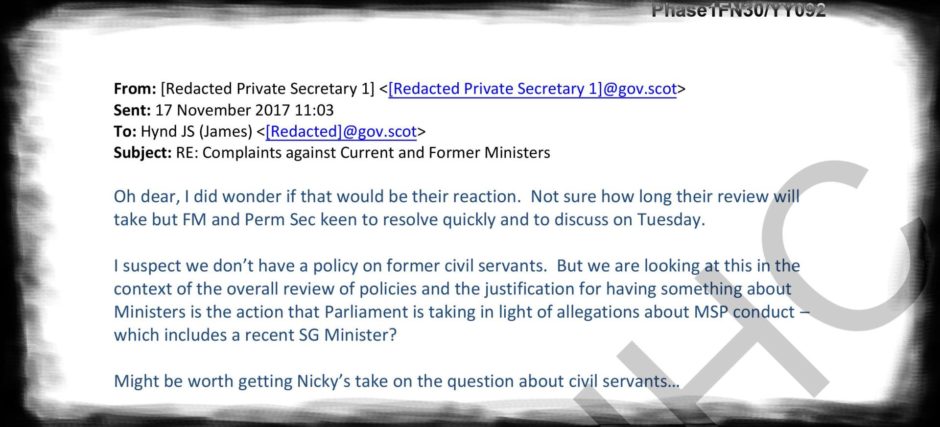
“Not sure how long their review will take but FM and Perm Sec keen to resolve quickly and to discuss on Tuesday.
“I suspect we don’t have a policy on former civil servants.
“But we are looking at this in the context of the overall review of policies and the justification for having something about Ministers is the action that Parliament is taking in light of allegations about MSP conduct – which includes a recent SG Minister?”.
Asked previously about the Cabinet Office email by Holyrood’s harassment inquiry committee, Mr Hynd said: “Given the commission from the Cabinet, given that the first minister had written to the presiding officer and was keen to take national leadership on the matter and given that the permanent secretary was keen that her duty of care to staff was as full and comprehensive as it might be, delaying until what turned out to be until September 2018 did not feel like an option to me.”
Committee member Alex Cole-Hamilton also previously asked Ms Evans whether the harassment policy was “designed to get Alex Salmond”.
She replied: “No. Absolutely not.”
Timeline of Mark McDonald’s resignation and the creation of a new Scottish Government policy on harassment
October 29 – Lawyer Aamer Anwar goes public with claims that women have been sexually harassed at Holyrood.
October 30 – First Minister Nicola Sturgeon writes to Presiding Officer Ken Macintosh, asking what additional steps might be taken to protect staff from harassment.
October 31 – Cabinet discussed the issue, hearing the FM had asked the permanent secretary to undertake a review of government policies and processes to ensure that they were fit for purpose.
November 2 – According to previous statements made by Mark McDonald, he was taken in to speak to John Swinney and the first minister’s chief of staff, Liz Lloyd, and was told his name had come up in “chatter” around MeToo.
November 3 – Mr McDonald has said the following day he then met Ms Lloyd, who revealed the nature of a complaint against him, although not the precise wording of an offending social media message he sent. It was made clear Mr McDonald would have to resign from government.
November 4 – Mr McDonald has said the FM phoned him in the afternoon and told him he would be expected to resign that evening; Ms Lloyd has now revealed that was also the evening she was made aware by a member of staff in an SNP parliamentary media office that they had received a query in relation to Alex Salmond’s conduct at Edinburgh Airport.
November 7 – Government official James Hynd produced the first version of a new harassment procedure that could be applied in respect of former ministers. Holyrood inquiry member Alex Cole-Hamilton has also said that on or around this date a complainant against Mr Salmond known as “Ms B” came forward to officials.
November 16 – Mr McDonald is suspended by the SNP after a second complainant came forward against him. On the same day Mr Hynd sent a copy of his draft harassment policy to a UK Cabinet Office official, who responded that they were “very uncomfortable” with the proposals regarding current and former ministers.
November 17 – The Cabinet Office reply was forwarded to an unnamed private secretary, who commented that “the justification for having something about Ministers is the action that Parliament is taking in light of allegations about MSP conduct – which includes a recent SG Minister?”.
